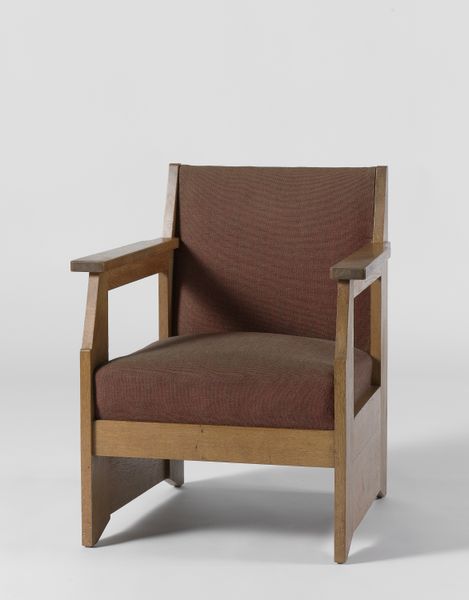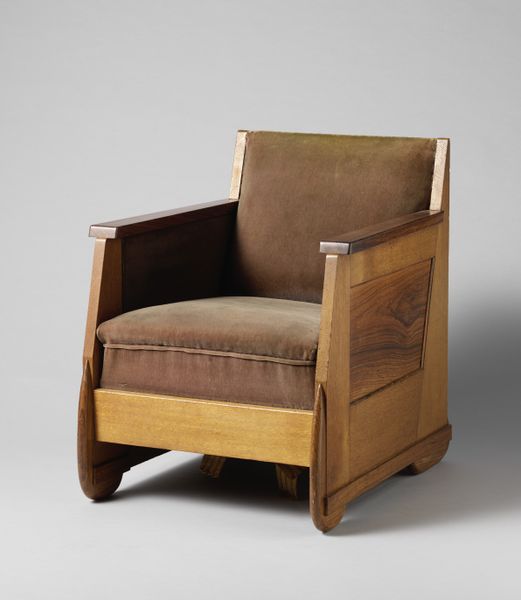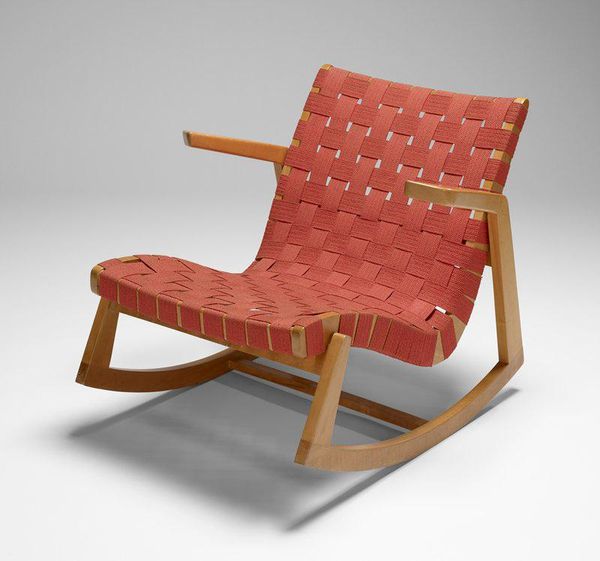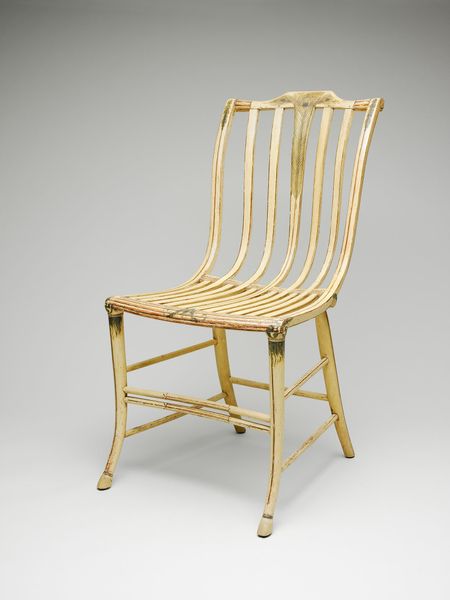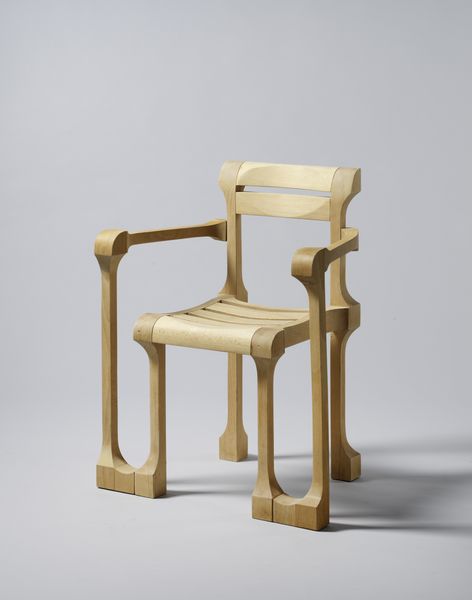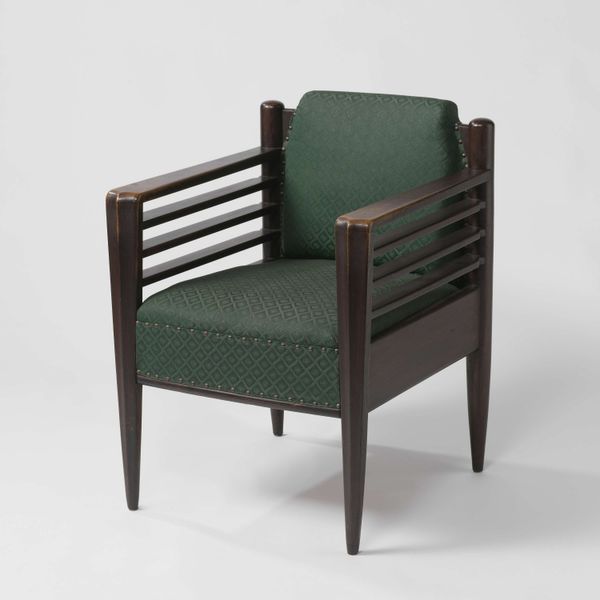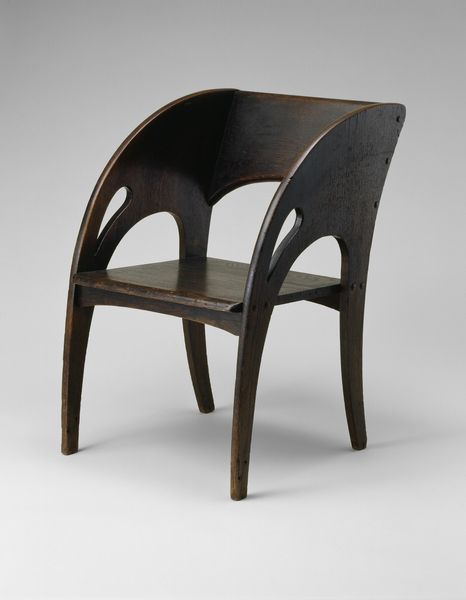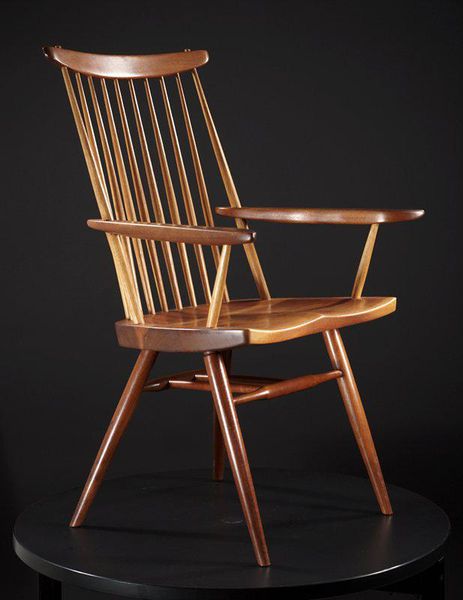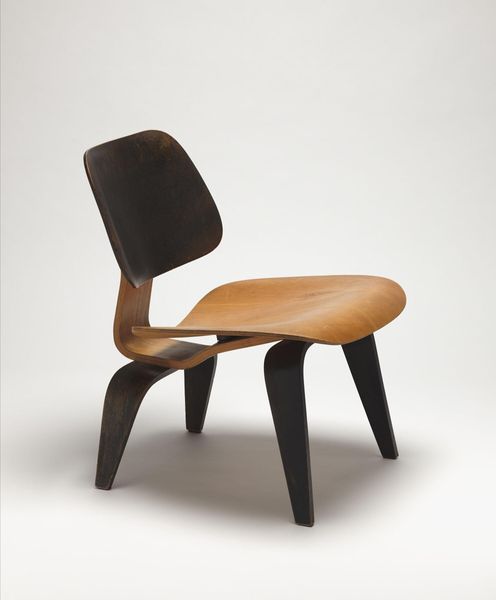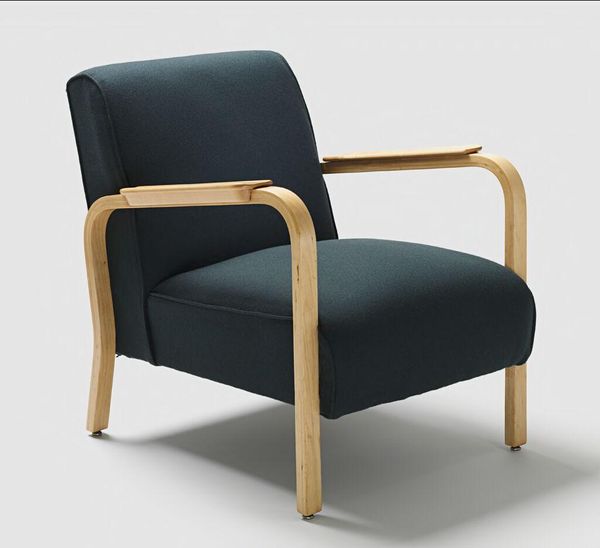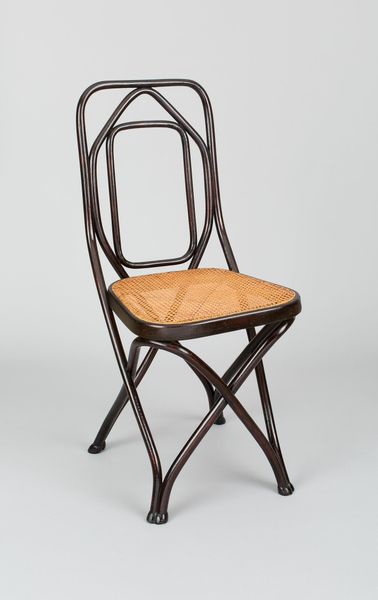
sculpture, wood
#
form
#
geometric
#
sculpture
#
wood
#
architecture render
#
modernism
Dimensions: height 57 cm, width 68 cm, depth 74 cm
Copyright: Rijks Museum: Open Domain
Editor: This striking piece is the "Kokke fauteuil" designed in 1987 by Ruud-Jan Kokke. It's crafted from wood, and what immediately grabs my attention is how these thin, parallel wooden slats create both the seat and the back. The chair looks almost architectural in its simplicity. What elements stand out to you in this work? Curator: Indeed, the architectonic quality is paramount. Note how Kokke utilizes the parallel lines, repeating them meticulously, establishing a clear structuralist approach. Observe also the almost austere geometry. The right angles and repeating intervals create a visual rhythm, devoid of excessive ornamentation. Do you notice any particular emphasis within this framework? Editor: I think that angled back breaks from the rigid geometry of the rest of the piece and catches the eye. Why do you think Kokke introduced this particular design element? Curator: Precisely. That oblique angle introduces a subtle dynamism, disrupting the orthogonal grid. Semiotically, it suggests a tension between order and freedom, constraint and release. The linear wooden elements are of particular importance in establishing both structural support and design aesthetics. What do you feel this use of material adds to the work? Editor: I hadn’t considered that! The wood feels… honest, I suppose. Exposing its grain and texture gives it a raw, functional feel. I see it as a harmonious balance of form and material. Curator: It appears so. The materiality reinforces the structure and gives the work an accessible sensibility. Your appreciation, and this conversation, encourages us to further interrogate such works.
Comments
No comments
Be the first to comment and join the conversation on the ultimate creative platform.
